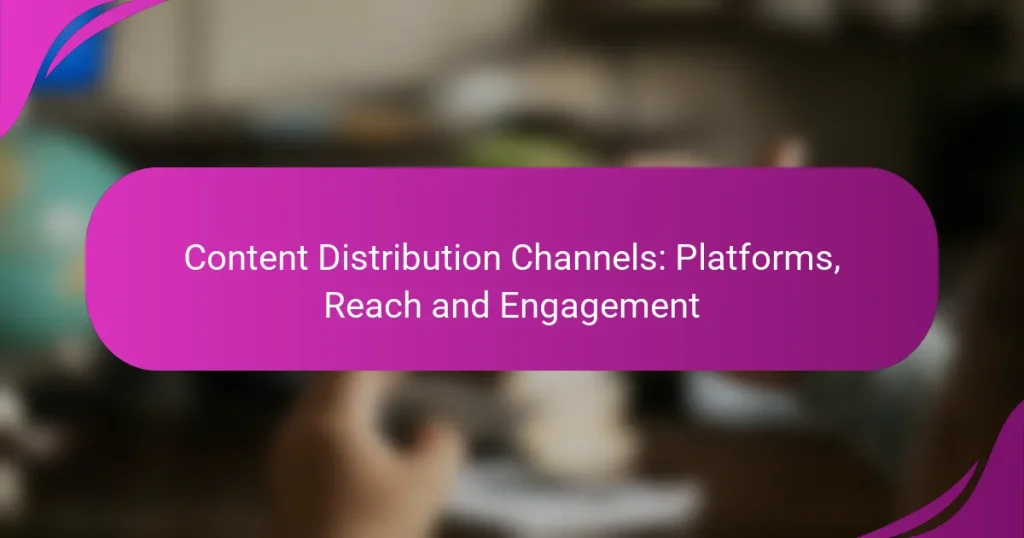Content distribution channels play a crucial role in amplifying your message and reaching target audiences effectively. In South Africa, platforms such as social media, email marketing, and influencer partnerships offer diverse opportunities for engagement. By strategically utilizing these channels, brands can enhance visibility and drive meaningful interactions, ultimately boosting conversion rates.

What are the best content distribution channels in South Africa?
The best content distribution channels in South Africa include social media platforms, email marketing services, content syndication networks, influencer partnerships, and SEO-focused blogs. Each channel offers unique advantages for reaching and engaging audiences effectively.
Social media platforms
Social media platforms like Facebook, Instagram, and Twitter are vital for content distribution in South Africa. They allow brands to connect with a broad audience and facilitate engagement through likes, shares, and comments.
When using social media, consider the demographics of each platform to tailor your content accordingly. For instance, Instagram is popular among younger users, making it ideal for visually appealing content.
Email marketing services
Email marketing remains a powerful tool for content distribution, allowing businesses to directly reach their audience. Services like Mailchimp and Constant Contact provide user-friendly interfaces to create and manage campaigns.
To maximize effectiveness, segment your email list based on user interests and behaviors. This approach can lead to higher open and click-through rates, ultimately enhancing engagement.
Content syndication networks
Content syndication networks, such as Outbrain and Taboola, help distribute your content across various websites, increasing visibility. These platforms promote your articles or videos on popular sites, driving traffic back to your original content.
When using syndication, ensure your content is high-quality and relevant to the audience of the sites where it will appear. This relevance can significantly improve engagement and conversion rates.
Influencer partnerships
Partnering with influencers can amplify your content’s reach in South Africa. Influencers have established trust with their followers, making their endorsements valuable for promoting your brand.
Choose influencers whose audience aligns with your target market. Collaborate on content that feels authentic and resonates with their followers to enhance engagement and credibility.
SEO-focused blogs
SEO-focused blogs are essential for organic content distribution, helping your content rank higher in search engine results. By optimizing your blog posts with relevant keywords, you can attract more visitors over time.
Regularly update your blog with fresh, informative content and utilize internal linking to keep readers engaged. This strategy not only improves SEO but also encourages users to explore more of your content.
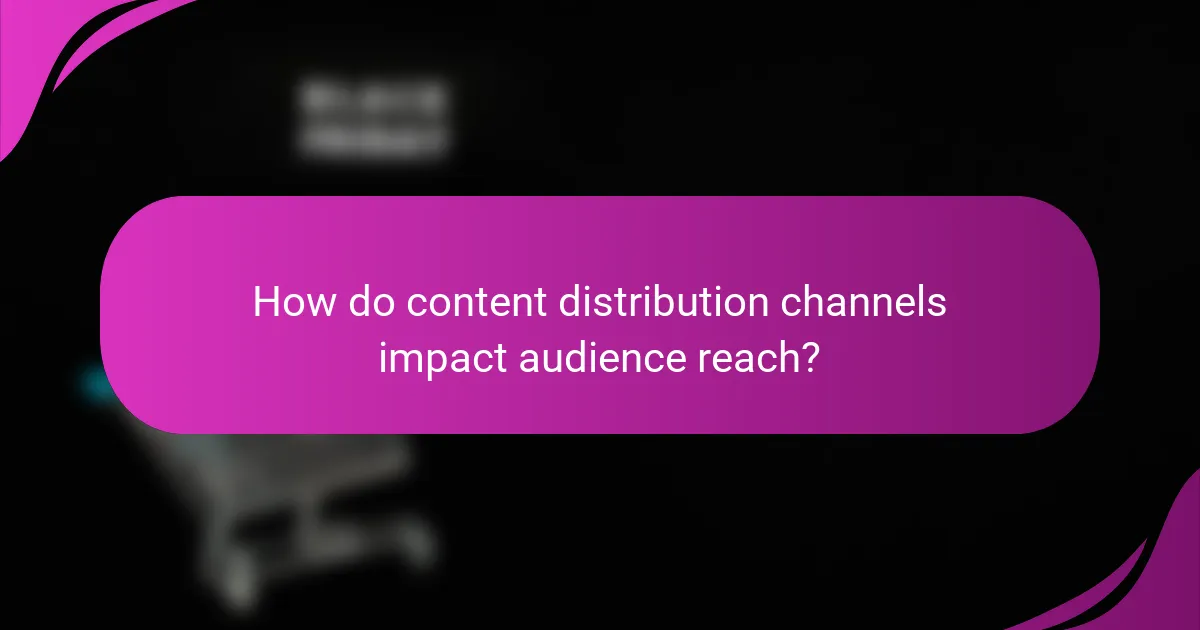
How do content distribution channels impact audience reach?
Content distribution channels significantly influence audience reach by determining how and where your content is shared. Effective use of these channels can enhance visibility, engagement, and ultimately, conversion rates.
Wider audience engagement
Utilizing diverse content distribution channels allows brands to engage a broader audience. For instance, sharing content across social media platforms, blogs, and email newsletters can attract users from different demographics and interests.
To maximize engagement, consider using a mix of organic and paid strategies. Organic reach might include SEO-optimized blog posts, while paid options could involve social media ads targeting specific user groups.
Targeted demographic access
Content distribution channels enable brands to target specific demographics effectively. Platforms like Facebook and LinkedIn offer advanced targeting options based on user behavior, interests, and location.
For example, a company selling luxury goods might focus its efforts on Instagram and Pinterest, where visual content thrives, while a B2B service could prioritize LinkedIn for professional engagement. Tailoring content to fit the preferences of each demographic increases the likelihood of interaction.
Increased brand visibility
Strategically leveraging content distribution channels can significantly boost brand visibility. Consistent posting across various platforms helps keep your brand top-of-mind for consumers.
Consider using analytics tools to track which channels yield the best results for your brand. Adjust your strategy based on performance metrics, focusing on high-engagement platforms to enhance overall visibility and recognition.
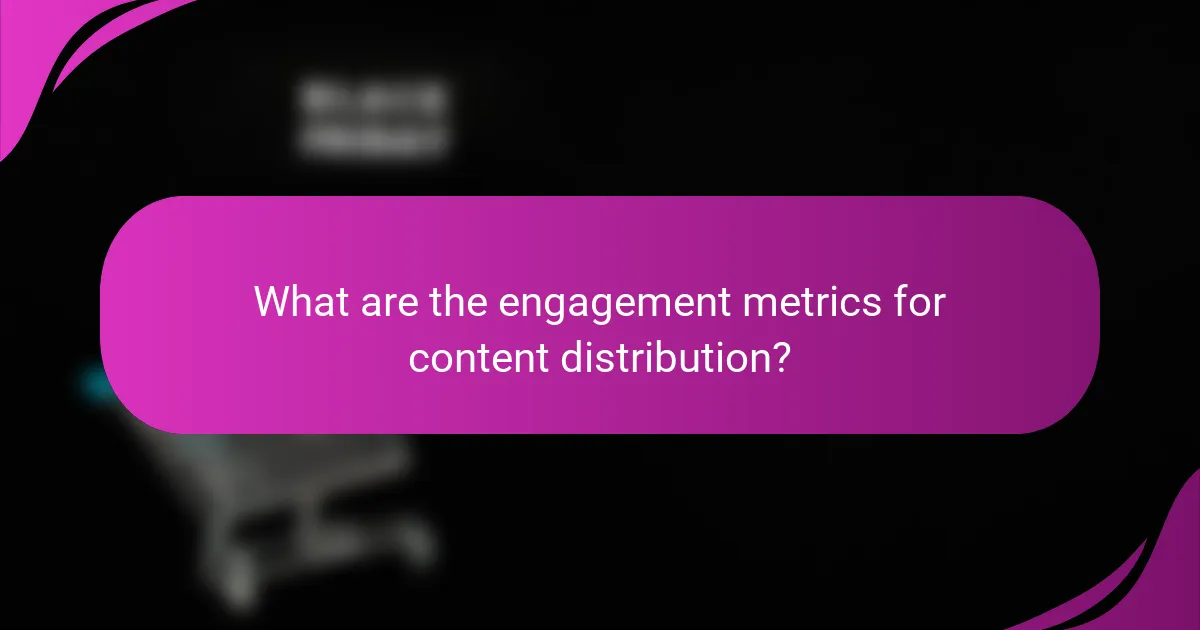
What are the engagement metrics for content distribution?
Engagement metrics for content distribution are key indicators that measure how effectively your content resonates with the audience. These metrics help assess the performance of your content across various platforms, guiding adjustments to improve reach and interaction.
Click-through rates
Click-through rates (CTR) indicate the percentage of users who click on a link compared to the total number of users who view the content. A higher CTR suggests that your content is compelling and relevant to the audience. Aim for a CTR of around 2-5% as a general benchmark, but this can vary significantly by industry.
To improve CTR, use clear and enticing calls to action (CTAs) and optimize headlines. A/B testing different headlines or CTAs can provide insights into what resonates best with your audience.
Social shares and likes
Social shares and likes reflect how much your content is being shared and appreciated on social media platforms. These metrics are crucial as they amplify your reach and can lead to increased visibility. Aiming for a consistent increase in shares and likes can indicate growing audience engagement.
Encourage sharing by incorporating social sharing buttons and creating shareable content, such as infographics or compelling videos. Engaging with your audience through comments can also enhance the likelihood of shares.
Conversion rates
Conversion rates measure the percentage of users who take a desired action, such as signing up for a newsletter or making a purchase, after engaging with your content. A good conversion rate typically ranges from 1-5%, depending on the industry and type of content. Tracking this metric helps evaluate the effectiveness of your content in driving specific outcomes.
To boost conversion rates, ensure your content aligns with user intent and provides clear value. Utilize landing pages optimized for conversions and consider offering incentives, such as discounts or free trials, to encourage action.
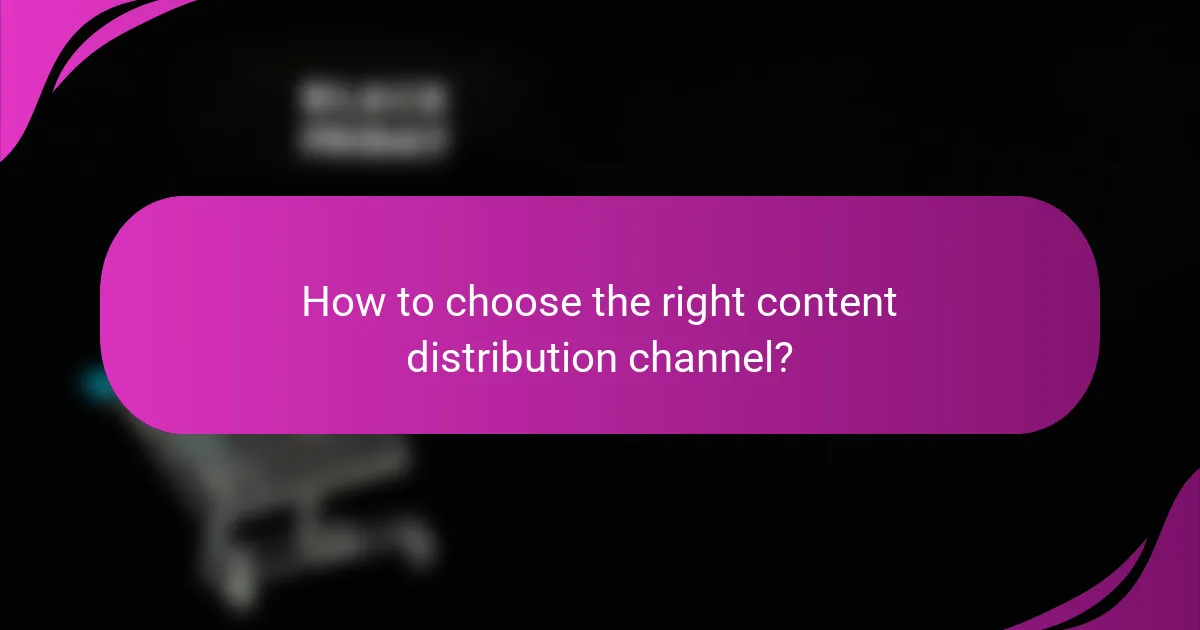
How to choose the right content distribution channel?
Choosing the right content distribution channel involves understanding your audience, assessing channel effectiveness, and aligning your content type with the platform’s strengths. A well-selected channel can significantly enhance reach and engagement, driving better results for your content strategy.
Identify target audience
Understanding your target audience is crucial for selecting the appropriate content distribution channel. Consider demographics such as age, location, interests, and online behavior to determine where your audience spends their time. For instance, younger audiences may prefer platforms like TikTok or Instagram, while professionals might engage more on LinkedIn.
Utilize tools like surveys, social media insights, and analytics to gather data about your audience. This information will guide you in choosing channels that resonate with your target demographic, ensuring your content reaches the right people.
Evaluate channel performance
Evaluating the performance of potential distribution channels is essential for making informed decisions. Look at metrics such as engagement rates, reach, and conversion rates to assess how well each channel performs for your content type. For example, a channel with high engagement but low reach may be ideal for niche content.
Consider using A/B testing to compare different channels and formats. This approach allows you to see which channels yield the best results over time, helping you refine your strategy and focus on the most effective platforms.
Consider content type
The type of content you create should influence your choice of distribution channel. Visual content, such as videos and infographics, often performs better on platforms like Instagram and YouTube, while long-form articles may be more suited for blogs or LinkedIn. Tailoring your content to fit the strengths of each channel can enhance engagement.
Additionally, consider the format of your content. For instance, if you are producing a podcast, distributing it through platforms like Spotify or Apple Podcasts will be more effective than traditional social media. Aligning content type with the right channels maximizes your outreach and impact.
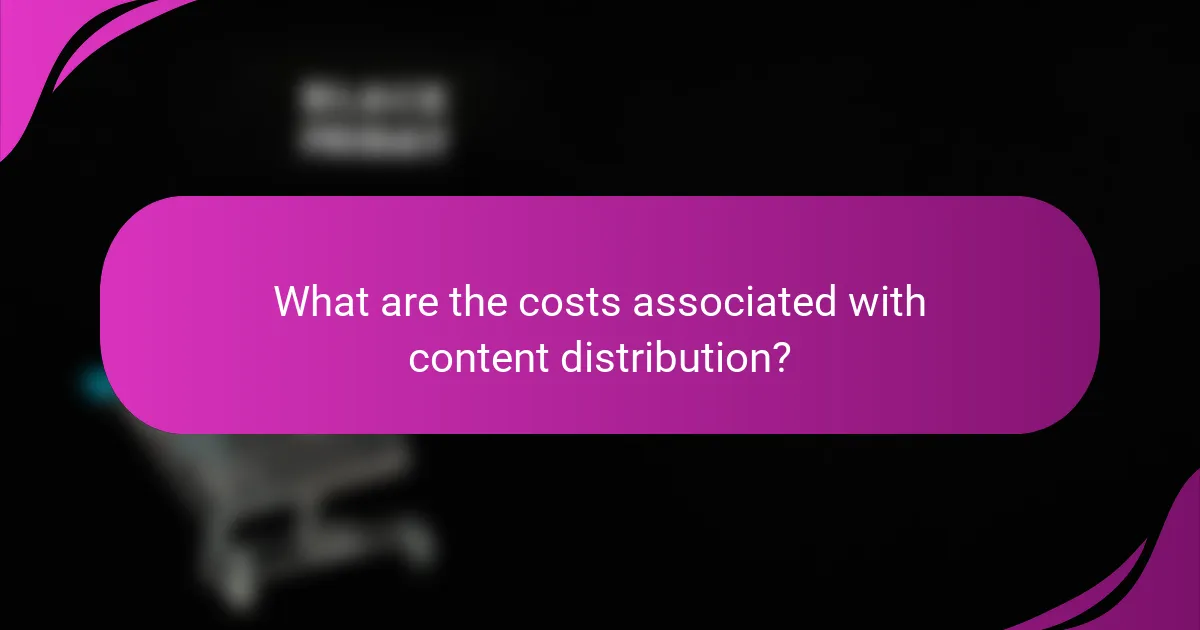
What are the costs associated with content distribution?
Content distribution involves various costs that can significantly impact your budget. Key expenses include paid advertising, subscription fees for platforms, and the costs of creating the content itself.
Paid advertising expenses
Paid advertising is often a primary cost in content distribution, as it can enhance visibility and reach. Expenses can vary widely based on the platform, targeting options, and competition, typically ranging from a few cents to several dollars per click or impression.
When budgeting for paid ads, consider the potential return on investment (ROI). Set clear goals and monitor performance to avoid overspending on ineffective campaigns. Common platforms include Google Ads, Facebook Ads, and LinkedIn Ads, each with unique pricing structures.
Subscription fees for platforms
Many content distribution platforms charge subscription fees, which can be a recurring cost. These fees may range from a few dollars per month for basic services to hundreds for premium features or analytics tools.
Evaluate the features offered by each platform against your needs. Some platforms may provide free trials, allowing you to assess their value before committing. Popular options include Hootsuite, Buffer, and Mailchimp, each with different pricing tiers based on functionality.
Content creation costs
Creating high-quality content incurs its own set of costs, including expenses for writing, design, and production. Depending on the complexity and quality required, these costs can range from low hundreds to thousands of dollars per piece.
Consider whether to hire freelancers, agencies, or in-house teams for content creation. Each option has different implications for quality and cost. Establish a clear budget and timeline to ensure that content creation aligns with your distribution strategy.
